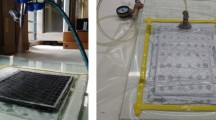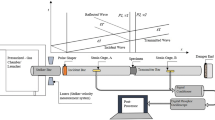Abstract
The effect of the Mullins softening on mode I fracture of carbon-black filled rubbers was investigated experimentally. Large specimen of NR and SBR filled with the same amount and nature of carbon-black were submitted to uniaxial tension. Then, single edge notch tension samples were cut along various directions with respect to the direction of preconditioning, and submitted to tension until break. The fracture energy was estimated and compared according to the intensity of Mullins softening already undergone in the direction of crack opening and according to the softening undergone in other directions. The NR shows significantly improved resistance to crack propagation compared to the SBR due to its crystallization ability. For both materials, it was observed that a moderate prestrain has a positive impact increasing the material fracture toughness and that material softening and anisotropy induced by Mullins effect does not show on resistance to mode I crack propagation.










Similar content being viewed by others
References
Buist JM (1945) Tear resistance I. Mechanisms of tearing of natural and synthetic rubbers. Rubber Chem Technol 18:486–503
Cadwell SM, Merrill RA, Sloman CM, Yost FL (1940) Dynamic fatigue life of rubber. Rubber Chem Technol 13:304–315
Diani J, Brieu M, Vacherand JM (2006) A damage directional constitutive model for Mullins effect with permanent set and induced anisotropy. Eur J Mech A Solids 25:483–496
Diani J, Fayolle B, Gilormini P (2009) A review on the Mullins effect. Eur Polym J 45:601–612
Gabrielle B, Vieyres A, Sanseau O, Vanel L, Long D, Sotta P, Albouy PA (2012) Tear rotation in reinforced natural rubber. In: Jerrams S, Muryphy N (eds) Constitutive models for rubber VII 221–225. Taylor and Francis Group, London
Gdoutos EE, Schubel PM, Daniel IM (2004) Determination of critical tearing energy of tyre rubber. Strain 40:110–125
Gherib S, Chazeau L, Pelletier JM, Satha H (2010) Influence of the filler type on the rupture behavior of filled elastomers. J Appl Polym Sci 118:435–445
Griffith AA (1921) The phenomena of rupture and flow in solids. Philos Trans R Soc Lond A221:163–198
Hamed GR (2005) Tearing of vulcanized rubber. Rubber Chem Technol 78:548–553
Itskov M, Haberstroh E, Ehret A, Vohringer M (2006) Experimental observation of the deformation induced anisotropy of the Mullins effect in rubber. Kautsch Gummi Kunstst 59:93–96
Lake GJ (1970) Application of fracture mechanics to failure in rubber articles, with particular reference to groove cracking in tyres. Yied, deformation and fracture of polymers, Conference
Lidley PB (1972) Energy for crack growth in model rubber components. Strain Anal 7:132–140
Machado G, Chagnon G, Favier D (2012) Induced anisotropy by the Mullins effect in filled silicone rubber. Mech Mater 50:70–80
Mars W, Fatemi A (2002) A literature survey on fatigue analysis approaches for rubber. Int J Fatigue 24:949–961
Merckel Y, Brieu M, Diani J, Caillard J (2012) A Mullins softening criterion for general loading conditions. J Mech Phys Solids 60:1257–1264
Mullins L (1969) Softening of rubber by deformation. Rubber Chem Technol 42:339–362
Rivlin RS, Thomas AG (1953) Rupture of rubber. I. Characteristic energy for tearing. J Polym Sci 10:291–319
Thomas AG (1994) The development of fracture mechanics for elastomers. Rubber Chem Technol 67:G50–G60
Trabelsi S, Albouy PA, Rault J (2003) Effective local deformation in stretched filled rubber. Macromolecules 36:9093–9099
Author information
Authors and Affiliations
Corresponding author
Rights and permissions
About this article
Cite this article
Diani, J., Brieu, M., Batzler, K. et al. Effect of the Mullins softening on mode I fracture of carbon-black filled rubbers. Int J Fract 194, 11–18 (2015). https://doi.org/10.1007/s10704-015-0030-5
Received:
Accepted:
Published:
Issue Date:
DOI: https://doi.org/10.1007/s10704-015-0030-5




